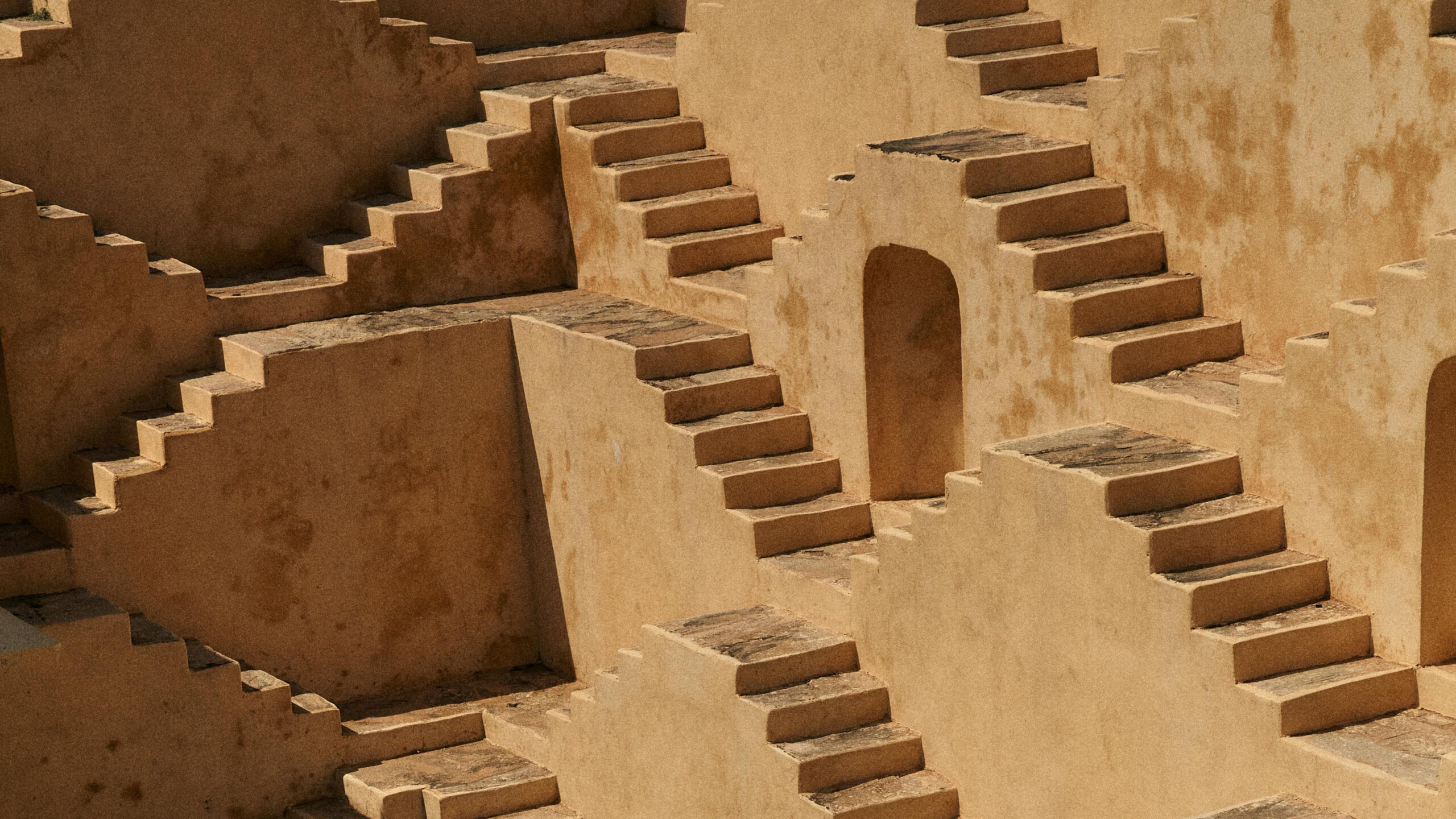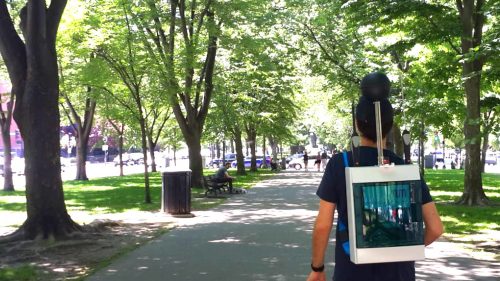As India grapples with record-breaking summer temperatures, with the national capital reaching a scorching 52.9 degrees Celsius in May this year, the need for innovative cooling strategies becomes imperative. Addressing this challenge requires a multifaceted approach that combines traditional wisdom with modern technology, urban planning with community engagement, and individual actions with large-scale infrastructure projects.
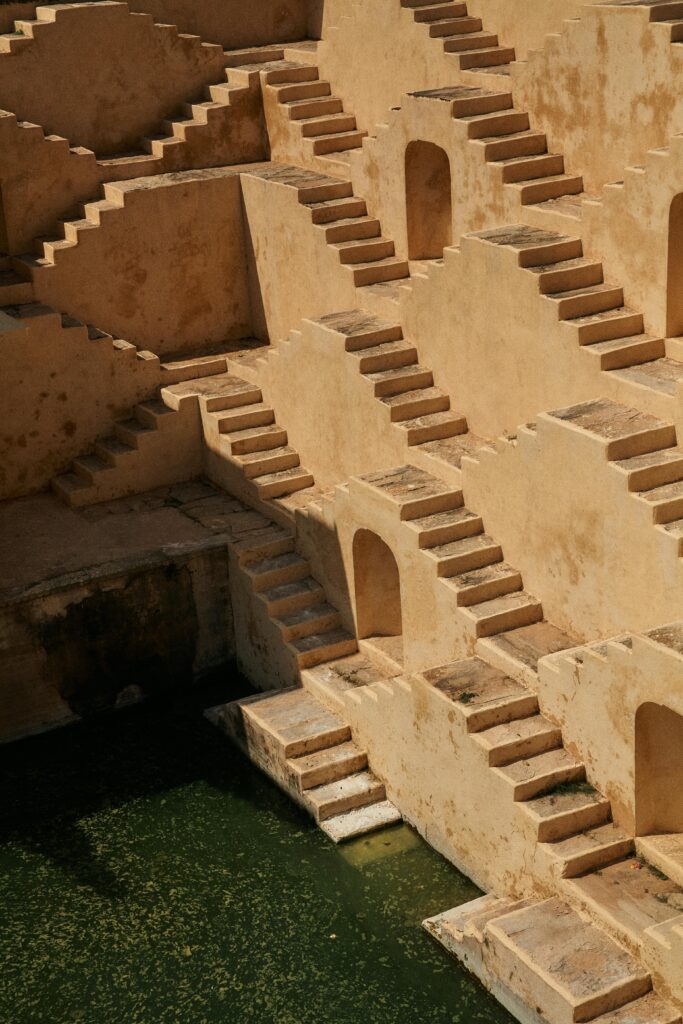
In India, several of our towns and cities traditionally utilised Baolis or stepwells, a timeless solution that at once recharges groundwater while naturally cooling its surrounding. Serving as social centres, Baolis historically brought communities together, fostering connections and providing respite from the heat in more ways than one. A study of passive cooling techniques in mediaeval Indian stepwells1 found that strategies like airflow, shading, and natural ventilation could effectively maintain comfortable temperatures in the surrounding areas. Solar shading and evaporative cooling techniques were particularly effective, with the potential to reduce indoor and surrounding temperatures by up to 7°C.
The revitalisation of these existing structures, the rejuvenation of existing water bodies, man-made and natural, and reintegrating them into our urban environments can have a drastic impact on lowering temperatures while also forming important social nodes.
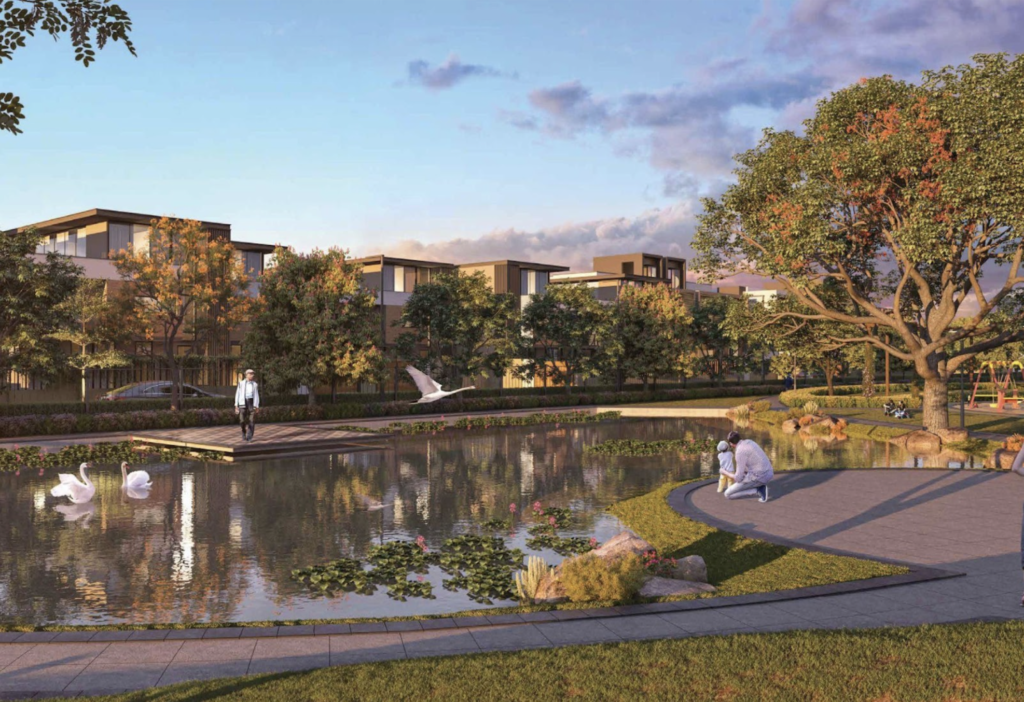
In our work, we prioritise allocating surface area for built zones and open spaces based on water’s percolation potential, aiming to maximise local water conservation efforts and have seen its positive effects on water management and sustainability. Drawing inspiration from traditional Indian Baolis, modern infrastructure can incorporate water features and vegetation as heat sinks in urban areas, accommodating groundwater recharge as an essential part of development while forming essential heatsinks.
Tackling Urban Heat Through Sustainable Transportation Solutions
Vehicular transport and the heat emitted by individual vehicles are significant contributors to the Urban Heat Island (UHI) effect in India. According to the International Energy Agency (IEA)2, road transport currently accounts for 20-30% of urban air pollution, resulting in vehicular emissions being a major source of urban heat. This issue is growing rapidly as India’s vehicle population continues to increase. IEA projects India’s vehicle fleet to triple by 2040, further exacerbating the UHI effect and underlining the urgent need for sustainable transportation solutions in the country.
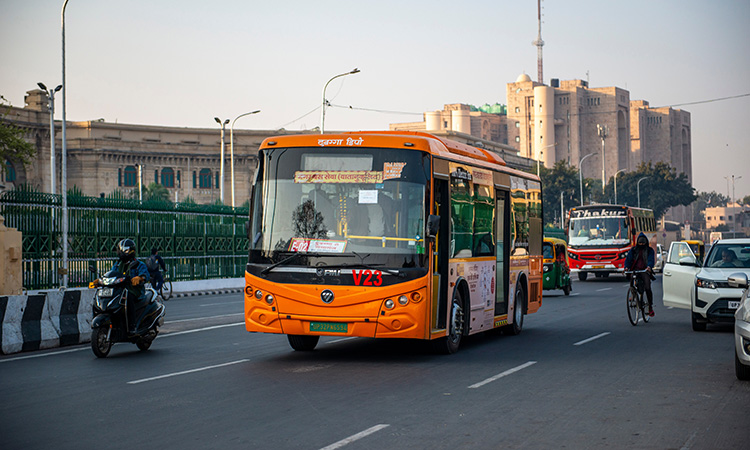
To address the transportation requirements of a growing population it is essential to invest in effective public transportation systems. Like Delhi, a city with a diverse range of public transportation options, including buses, railways, metro rail, and intermediate paratransit modes like auto-rickshaws and battery-operated rickshaws, is actively working to create an efficient and integrated transportation network. This city-level change can work to reduce the number of private vehicles on the road3. This decreases traffic congestion and lowers vehicle heat emissions, improving air quality and reducing urban temperatures4. By promoting shared infrastructure and encouraging active modes of transportation, we can combat heat and nurture a sense of community and connectivity among residents.
Learning from practices of the past for neighbourhood-level heat resilience
One of the most thoughtful design elements in traditional Indian towns is the ‘pyau’, or drinking water utility. Nestled in busy streets, religious sites, and public buildings, these humble structures not only quench thirst but also offer respite from the relentless heat. However, their presence has dwindled in contemporary urban landscapes.
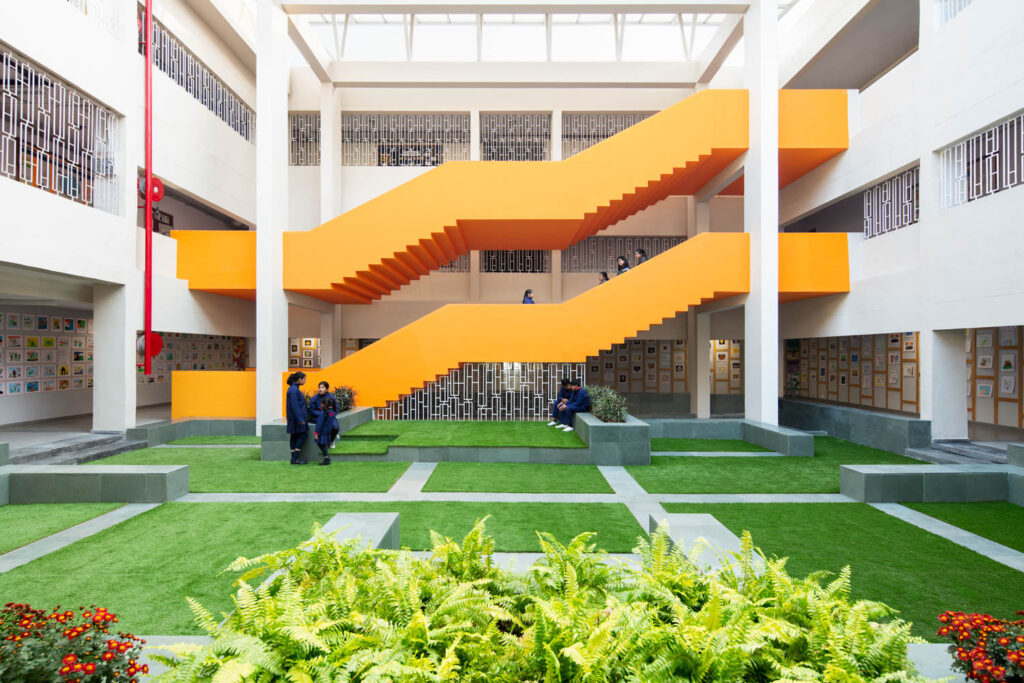
Reviving such amenities emphasising the fusion of shade, rest, and water as essential elements for heat stress relief. The initiative of Swachh Bharat Mission5, the construction of toilets along large public building boundaries, also presents an opportunity to expand this concept further. Instead of mere functional blocks, envisioning these spaces as small verandahs with drinking water facilities can transform them into welcoming havens for weary city dwellers also working as gathering points within the area, promoting social interaction and cohesion.
Sustainable Planning through Community Engagement
To make a lasting impact on how our cities grow, we need to adopt a collaborative approach to planning and design. Traditionally, Indian communities possessed inherent knowledge about constructing bunds and embankments, building in ways that minimise heat gain, and collectively maintaining local green cover.
Involving local communities in planning efforts is crucial for the continued success of these initiatives. Like the Bhubaneswar Smart City plan, which prioritised public engagement through initiatives like Citizens Connect6, a three-month project that successfully garnered input from nearly one-third of the city’s residents. By utilising diverse channels, the project fostered community participation in shaping the city’s future. When citizens take the initiative in creating and sustaining change, and when all stakeholders actively engage in decision-making processes, they are more likely to understand and appreciate the significance of the efforts being undertaken. This collaborative approach fosters a shared vision for a healthier, more resilient, and sustainable future.
Heat-resilience on the level of the individual building
While green building ratings and standards are gaining priority in the construction industry, individuals can also take conscious steps to mitigate heat within their homes and neighbourhoods. Avoiding highly reflective surfaces on facades prevents heat from being redirected into the building’s environment. Incorporating chajjas (projecting eaves) and jaalis (perforated screens) are age-old techniques that are still very relevant today. Shaded balconies and green terraces can further shield interior spaces from direct heat gain.
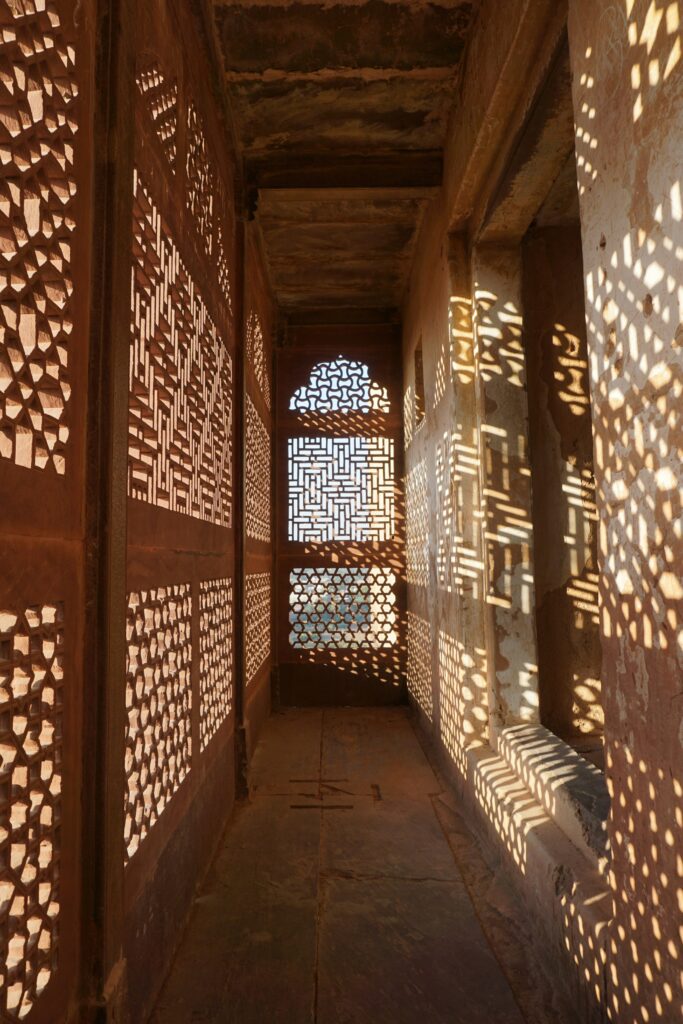
In one of our projects, we observed that the facade design significantly contributed to lower internal temperature. The use of vertical wooden louvres on balconies and interior spaces acted as natural shading devices. These louvres helped in regulating airflow and shielding the interiors from direct sunlight, thereby enhancing the home’s thermal comfort.
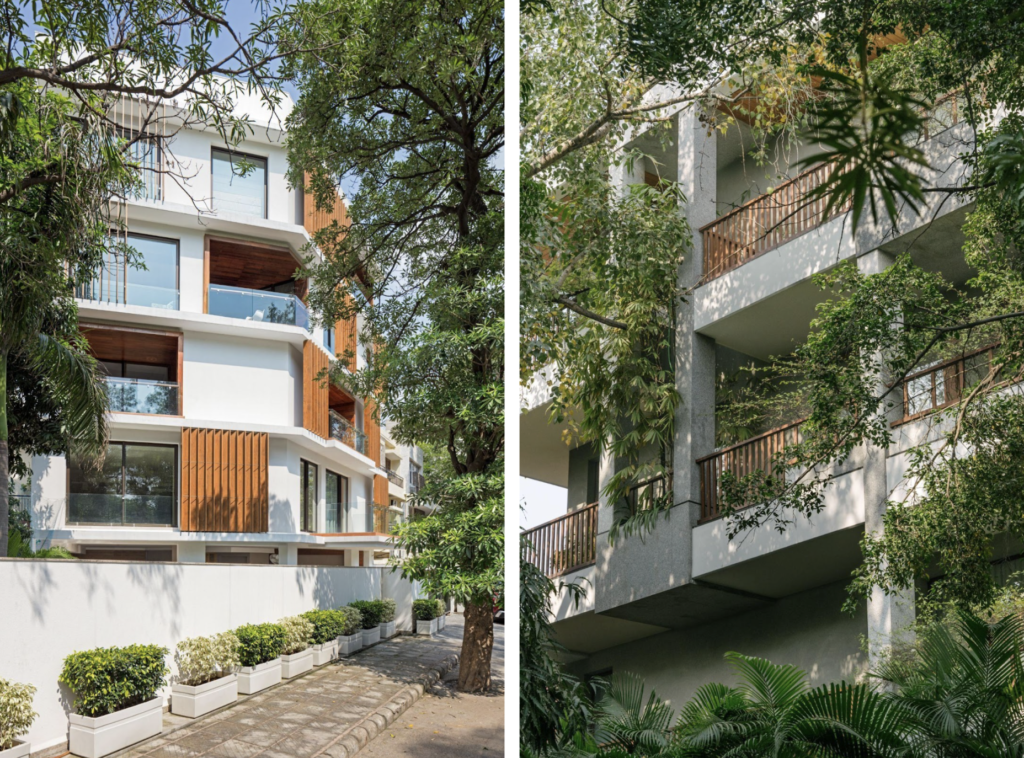
Right: The A18 residence in New Delhi incorporates green balconies that serve as natural shields, helping to maintain a cooler indoor environment.
Source: Team3
These solutions are flexible and can be integrated into contemporary designs to create modern, heat-resilient structures. Advanced options like sun-tracking panels and automated shading systems elevate facade design by responding to environmental conditions in real-time. By leveraging these methods, individuals can contribute significantly to creating cooler, more sustainable urban spaces.
References
1 Parmar, S. P., & Mishra, D. P. (2024). Passive cooling techniques in medieval Indian stepwells. Frontiers of Architectural Research. https://doi.org/10.1016/j.foar.2024.03.014
2 International Energy Agency (IEA). (2023). Transitioning India’s road transport sector. IEA. https://www.iea.org/reports/transitioning-indias-road-transport-sector. Licence: CC BY 4.0
3 National Institute of Urban Affairs (NIUA). (n.d.). Five ways to promote public transport in Indian cities. C-Cube Blog. https://niua.in/c-cube/blog/content/five-ways-promote-public-transport-indian-cities
4 Verma, A., Harsha, V., & Subramanian, G. H. (2021). Evolution of urban transportation policies in India: A review and analysis. Transportation in Developing Economies, 7(25). https://doi.org/10.1007/s40890-021-00136-1
5 Ministry of Jal Shakti, Department of Drinking Water and Sanitation. (n.d.). Swachh Bharat Mission (Grameen). https://swachhbharatmission.ddws.gov.in/
6 National Institute of Urban Affairs (NIUA). (n.d.). The Smart City Challenge Round 1: Smart City Proposal Bhubaneswar. SmartNet. https://smartnet.niua.org/content/cbfee97b-87cb-4c87-9a39-d4bfe41cd442

